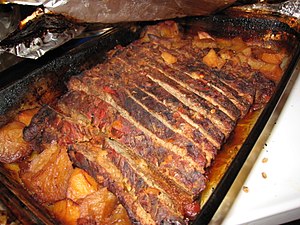Image: The Weighing of Souls, from the Papyrus of the Book of the Dead, Egyptian museum, Turin Italy (photo by Souza_DF/Pixabay)
Each year, when I come to the seder table, I experience it a little differently.
At my very first seder, before I even thought I could become a Jew, I was mystified. I was the Child Who Does Not Know How to Ask at a seder that was mostly in Hebrew and completely opaque to me. What I did know was that I had been invited to join that household for something precious to them. I listened, I followed directions, I drank four cups of wine and I left feeling a little sick. I look back on that seder, and realize that I was there as an observer, not as a participant, and four cups of wine is a lot of wine, so OK.
Every year since I began my journey into Judaism, the seder sneaks up on me. The first few years, I was worried about performance, from the dishes to the text. I wanted it to be “perfect.” I wanted it to be a correct seder. It never was, and finally it dawned on me that I was missing the point.
In the midst of the Maggid, the portion of the Haggadah where we retell the events of the Exodus, there’s the following passage:
בְּכָל־דּוֹר וָדוֹר חַיָּב אָדָם לִרְאוֹת אֶת־עַצְמוֹ כְּאִלּוּ הוּא יָצָא מִמִּצְרַיִם, שֶׁנֶּאֱמַר: וְהִגַּדְתָּ לְבִנְךָ בַּיּוֹם הַהוּא לֵאמֹר, בַּעֲבוּר זֶה עָשָׂה ה’ לִי בְּצֵאתִי מִמִּצְרַיִם. לֹא אֶת־אֲבוֹתֵינוּ בִּלְבָד גָּאַל הַקָּדוֹשׁ בָּרוּךְ הוּא, אֶלָּא אַף אוֹתָנוּ גָּאַל עִמָּהֶם, שֶׁנֶּאֱמַר: וְאוֹתָנוּ הוֹצִיא מִשָּׁם, לְמַעַן הָבִיא אוֹתָנוּ, לָתֶת לָנוּ אֶת־הָאָרֶץ אֲשֶׁר נִשָׁבַּע לַאֲבֹתֵינוּ.
In each and every generation, a person is obligated to see himself as if he left Egypt, as it is stated (Exodus 13:8); “For the sake of this, did the Lord do [this] for me in my going out of Egypt.” Not only our ancestors did the Holy One, blessed be He, redeem, but rather also us [together] with them did he redeem, as it is stated (Deuteronomy 6:23); “And He took us out from there, in order to bring us in, to give us the land which He swore unto our fathers.” – Haggadah from Sefaria.org
This is the passage that finally explained to me what I was supposed to be doing at seder. I began digging at the concept of Egypt, and the results have been coming for over 20 years. Each year, sometime during the seder, I identify an Egypt that I have left, or in which I am still trapped and in need of deliverance.
- One year I suddenly flashed on my flight from a bad marriage and an abusive parent. I remembered my terror and my fear of the unknown. I burst into tears at the table and couldn’t bring myself to tell anyone what was happening with me.
- One year I realized that I was still in the Egypt of racism and a beneficiary of racism. There were bad things in my head that were never going away. Leaving that Egypt would mean reschooling my behavior and hoping that my mis-trained brain would follow.
- One year I burnt myself rather badly kashering the kitchen. I felt grumpy at the seder table until it hit me that here I was again, in Egypt! I had let my ego take over my observance of mitzvot. I resolved to let the sea part and let it take my ego with it. My house has never been that perfectly cleaned for Pesach since, but my observance has been a lot more authentic.
- One year I fled Israel for Passover. (I know, irony.) I was not sure that I was going back to finish rabbinical school because I was miserable. I felt too Other to be useful as a rabbi; too lost in Egypt to be any good to anyone. Then I sat at seder in NYC with some Jews who hadn’t done a seder in years. I rose from that table, ready to go back to school, convinced that I had something to offer.
- One year I was too exhausted for seder. I wrote about that seder in the post For a Very Hard Year: The Movie Seder.
I don’t know what Egypt I will be delivered from this year. All of us have “narrow places” in our lives, places that we’ve gotten out of, or can’t get out of, or ways in which we are stuck. The message of the seder is one of hope: wherever I’m stuck, whatever is sticking in my throat, the situation is not hopeless. The sea may or may not part (I’m open to a miracle) but Pharaoh cannot hold me: I am free.
What Egypts have you left? What Egypts remain?














